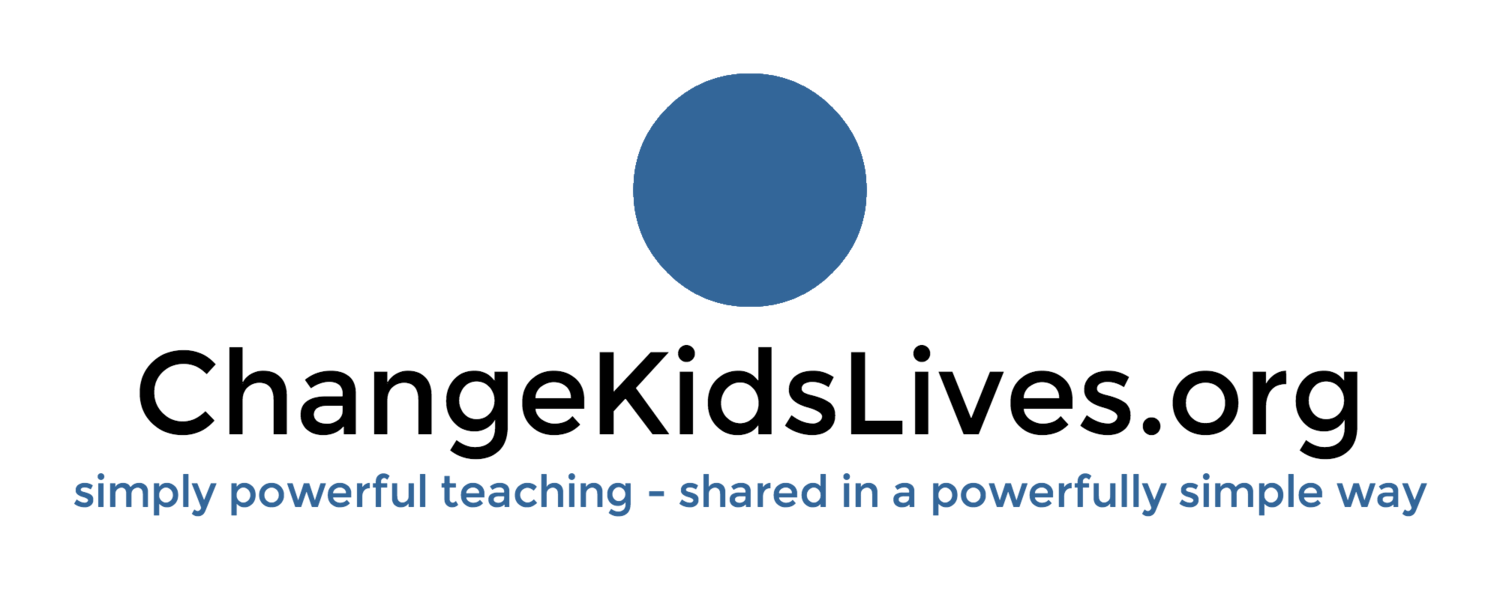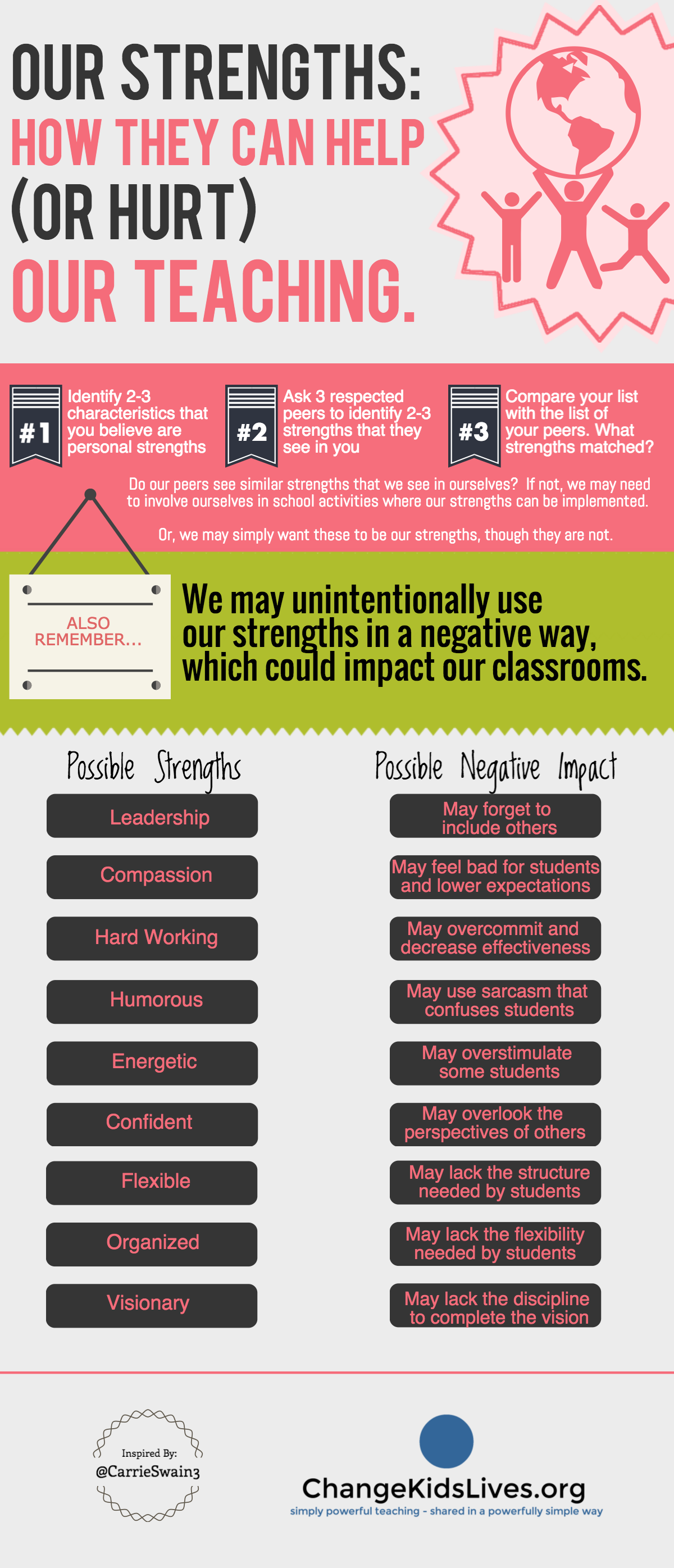How Using Our Strengths Can Help (And Hurt) Our Teaching
Inspired By Carrie Swain
simple truth:
Our personal strengths can shine in the classroom or be unintentionally misused.
Think about the best educators in your school. Who are those teachers who truly and consistently reach students? Often, these highly effective teachers have a very accurate understanding of their own strengths and limitations, and they work relentlessly to incorporate their strengths into their daily instruction.
We know that we spend so much of our time in schools evaluating our students' learning profiles and strengths. Though how much time do we spend identifying our own personal strengths? And how effective are we in incorporating our unique talents into our daily teaching?
research tells us:
Sometimes it feels as though educators are self-depreciating when describing personal strengths, as we may feel more comfortable keeping the focus on our students. This sentiment can be well-intentioned. However, we must realize that before we truly reach our students, we must recognize our own strengths in the classroom. Gallup Poll research suggests that "people who do focus on their strengths every day are six times as likely to be engaged in their jobs. They are more productive too, both individually and in teams. And they are more than three times as likely to say they have an excellent quality of life." Recognizing and utilizing our strengths in the classroom must be a daily practice. Our students will thank us.
In addition, we know that any good thing can be used in excess, which may have negative implications. This sentiment rings true for our strengths too. We must be aware of how we can unintentionally misuse our strengths in the classroom. This can negatively impact our effectiveness with students. For example, if our strength is being compassionate, do we feel bad for some students and subconsciously lower our expectations? If we have the gift of humor, do we use sarcasm, which can confuse students? If we are visionaries, do we have the discipline to complete longer initiatives? These are just a few examples of how we need to be intentional with our strengths.
THIS STRATEGY IS INSPIRED BY:
Carrie Swain
2nd Grade Teacher
Plymouth, Indiana
Twitter @CarrieSwain3
Interesting Fact: I've kept a dream journal for two years
Educational Interests: Personalized student learning & connecting students to our world
"Change kids' lives by showing students that we care about them as people, see their individual strengths, & believe in what they have to offer."
-Carrie Swain
try this:
Take time to honestly examine and identify 2-3 strengths, which often come natural to us and are enjoyable
Ask 3 colleagues to identify 2-3 strengths that they consistently see in us, then compare their lists to our self-created lists to see what strengths match
Complete an online strength surveys including SmartStrengths, StrengthFinder, VIA, and Myers-Briggs
Identify one personal strength and brainstorm how we can maximize that strength in our daily teaching
Engage peers through meaningful conversations on how everyone's collective strengths can work together
Be aware that we can unintentionally use our strengths in negative ways, which can cause harm in the classroom
review & share this:
For additional reading and referenced research, click here.


